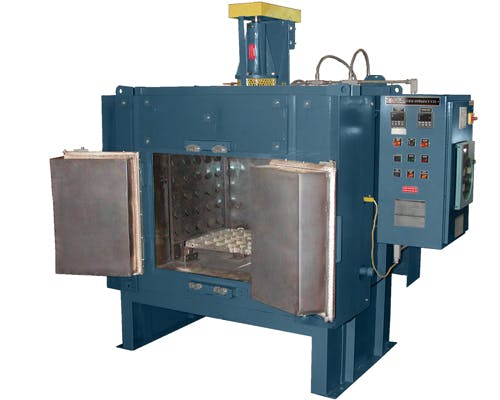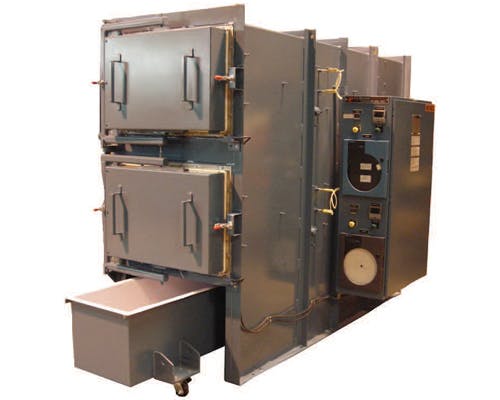When it comes to the heat treatment of Aluminum parts, solution heat treatment is one of the most common processes. The end result of solution heat treatment is similar to that of annealing as they both seek to make the part easier to work with. However, solution heat treatment achieves this end result in a different way and adds a quenching step to lock in the part’s softened state.
What Solution Heat Treatment Achieves

Solution heat treatment works by dissolving the elements within the part that are responsible for the age-hardening process. Once dissolved, these elements diffuse throughout the part until the internal structure is homogeneous. This diffusion of elements then leads to a temporary softness of the material so that it can be worked. The end result of solution heat treatment can be thought of as reversing the age-hardening process. The softness is then “locked-in” for an extended period of time when the part is subjected to rapid cooling. As the part returns to ambient temperature, the dissolved elements will begin to clump together, age-hardening the piece once more.
Despite both being used to achieve similar outcomes, annealing and solution heat treatment are not mutually exclusive. Annealing can be performed prior to solution heat treatment in order to make the part even easier to work with. This additional heat treatment step is not always required.
Atmosphere and Process

Air atmospheres are used for the solution heat-treatment process. The ideal temperature range for the atmosphere is between 450 and 575°C (842 to 1067°F). However, the exact temperature required is dependent on the alloy composition of the particular aluminum part. Once this target temperature is known, the atmosphere should be heated to within ±10°F that target.
If the temperature is too low, the part could lose strength and fail under stress. If it is too high, there are a few problems that could arise. Discoloration can occur, but this may not inherently be an issue if the part is to be coated or painted later on. The melting of critical elements within the part is a major problem to be on the lookout for. This can lead to disfiguration and subsequent reduction in strength of the part. And, increased strain can become present within the part, which can lead to failure as well.
The length of time a part is heated for is not entirely standard across the board. But, there is a rule of thumb to follow. In general, parts should be heated for one hour for every inch of cross-section thickness. The thicker the part is, the longer it will need to be heated so that the elements in the center of the cross-section can be dissolved.
Quenching After Heat Treatment

Quenching is performed after solution heat treatment so that the resumption of the age-hardening process is postponed. Without quenching, the age-hardening will resume almost immediately once the part is taken out of the furnace and begins to cool to the ambient temperature. Rapidly quenching the part “freezes” the diffused elements in place so that the hardening process is delayed. The quench medium can vary widely, from being submerged in cold to boiling water or water-polymer solutions, to being sprayed with water or forced air.
Additionally, parts can be stored at cold temperatures to extend the amount of time the softening from solution heat treatment lasts. With quenching alone, the softened state will only last a couple of hours. By storing the parts at below-freezing temperatures, this state can be preserved for up to a few days. And at -23°C (-10°F), the homogenized structure can last for even longer.
Conclusion
Solution heat treatment is a multi-step process that serves to soften parts that have been age-hardened so they can be worked. It achieves this by first heating the part to a target temperature and holding it there until all of the hardened elements diffuse throughout the piece. The exact temperature the piece is to be heated to depends on the alloy composition, and the length of time it is held at that temperature depends on the cross-sectional thickness. The part is then rapidly quenched, often in water, so that the diffused state of the elements is locked into place for an extended period of time.
L&L Special Furnace
At L&L Special Furnace, we manufacture a wide variety of furnaces for industrial uses, including specialized furnaces for solution heat treatment. If you are in need of a manufacturing furnace, contact us today for more information on the various models we have for aluminum treatment, including the VB, DV/DR, ADC, and DRQ series.
